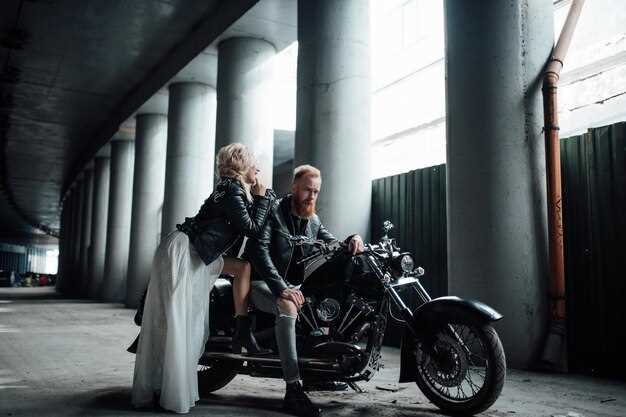
The world of motorcycles is vast and diverse, with various types of bikes catering to different riding preferences and experiences. Among these, cruisers, sport bikes, and touring bikes stand out as popular choices, each offering unique features, performance characteristics, and aesthetics. This comparison aims to elucidate the strengths and weaknesses of each category, helping riders make informed decisions based on their individual needs and riding styles.
Cruisers are known for their laid-back ergonomics and classic styling, providing a comfortable ride for those who enjoy leisurely trips. In contrast, sport bikes are engineered for speed and agility, appealing to thrill-seekers who crave high-performance riding and dynamic handling. Touring bikes, on the other hand, are designed for long-distance travel, offering amenities and comfort features that enhance the journey. Understanding the distinct qualities of these three types of motorcycles will enable riders to choose the right companion for their adventures.
This article will delve into the individual attributes of cruisers, sport bikes, and touring bikes, as well as their suitability for different riders. By breaking down the essential elements of each motorcycle class, we aim to provide a clear roadmap for enthusiasts seeking their ideal riding experience.
Performance Differences between Cruisers and Sport Bikes
When comparing cruisers and sport bikes, the performance characteristics of each category play a crucial role in their intended use and rider experience. Cruisers are designed for comfort and leisurely rides, typically featuring lower seat heights and relaxed riding positions. This design prioritizes stability over speed, making them ideal for long-distance cruising on highways. The performance of cruisers often emphasizes torque at lower RPMs, providing strong acceleration from a standstill, which is beneficial for city riding.
In contrast, sport bikes are engineered for high-speed performance and agility. They boast powerful engines that deliver peak horsepower at higher RPMs, allowing for quick acceleration and sharp handling. The upright riding position and lightweight frames of sport bikes contribute to their superior maneuverability, making them better suited for twisty roads and racetracks. In terms of braking performance, sport bikes typically feature advanced braking systems that provide rapid stopping power and greater control during aggressive riding.
Overall, the comparison between cruisers and sport bikes highlights distinct performance features that cater to different riding styles. While cruisers offer comfort and low-end power for relaxed rides, sport bikes deliver high-speed capabilities and agile handling for thrill-seekers. This differentiation is essential for riders to consider when choosing a bike that best fits their preferences and riding scenarios.
Comfort and Ergonomics in Touring vs. Cruiser Bikes

When it comes to comfort and ergonomics, the differences between touring bikes and cruisers are significant, reflecting their intended purposes and design characteristics. Touring bikes are built for long-distance travel, emphasizing rider comfort over prolonged durations. They often feature a more upright riding position, wide comfortable seats, and advanced suspension systems that absorb road imperfections, ensuring a smooth ride over extensive miles.
In contrast, cruisers typically showcase a lower seat height and a relaxed riding posture, allowing the rider to stretch their legs. The classic V-twin engine configuration often provides plenty of torque at low RPMs, making it easier to handle in city traffic. However, the ergonomics of cruisers may not support long rides as effectively as touring bikes, as they often lack the added comfort features found on their touring counterparts.
Another critical aspect is the handlebars. Touring bikes often have adjustable handlebars to accommodate various rider heights and preferences, contributing to a personalized fit. Cruisers usually have wide, pull-back handlebars that aim for a laid-back feel but can sometimes lead to fatigue on longer trips due to limited adjustability.
Wind protection is also a crucial factor in comfort. Touring bikes frequently come equipped with large windshields that protect the rider from wind buffeting and fatigue, an essential aspect for long journeys. Cruisers may feature smaller windshields or none at all, which can expose the rider to wind and weather elements, impacting overall comfort during lengthy rides.
In summary, while both types of bikes have their unique charm and appeal, touring bikes excel in comfort and ergonomics for long-distance travel, whereas cruisers offer a relaxed ride suited for shorter trips or leisurely rides. Ultimately, the choice between these two types of bikes depends on the rider’s preferences and intended use.
Cost Considerations: Maintenance and Insurance for Each Bike Type

When comparing cruisers, sport bikes, and touring bikes, cost considerations play a crucial role in the decision-making process. Each bike type comes with its own set of maintenance requirements and insurance costs that can influence the overall ownership experience.
Maintenance for cruisers is generally more affordable. The simplicity of their design leads to less frequent repairs and lower parts replacement costs. Basic maintenance like oil changes and tire replacements tends to be straightforward and inexpensive. Sport bikes, however, often require more specialized servicing due to their high-performance components. This specialization can increase labor costs and the frequency of maintenance, as sport bikes are typically used more aggressively, leading to quicker wear and tear.
On the other hand, touring bikes may have higher maintenance costs due to their complex systems, such as advanced electronics and added features for comfort. While they are built for long-distance travel, requiring less frequent servicing, the potential for higher repair costs is something buyers should consider.
In terms of insurance, cruisers often have lower premiums. Their reputation for being less performance-oriented translates to lower risk assessments by insurance companies. In contrast, sport bikes usually attract higher insurance rates because they are frequently categorized as high-risk due to their speed capabilities and the likelihood of accidents. Touring bikes can fall somewhere in between; while they are not as high-risk as sport bikes, their value and features can contribute to elevated premiums.
In conclusion, when assessing cost considerations in maintenance and insurance for each bike type, it is essential to weigh not only the initial purchase price but also the long-term financial implications associated with upkeep and coverage. Making a well-informed comparison will help potential buyers choose the bike that aligns with their budget and riding preferences.

